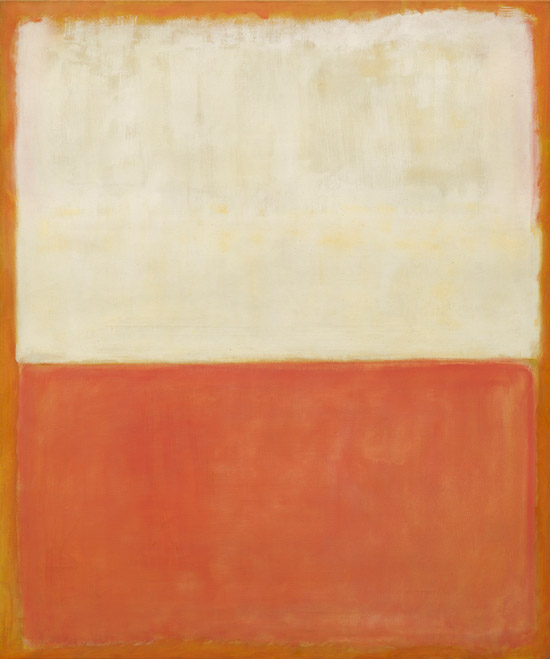Last Weeks to Catch Mark Rothko: Reflection at the MFA
View 11 masterpieces on loan from National Gallery of Art

Photo courtesy of Kate Rothko Prizel and Christopher Rothko/Artists Rights Society (ARS), NY/National Gallery of Art, Washington. Courtesy of the Museum of Fine Arts, Boston
The Museum of Fine Arts is better known for its collections of Old Dutch, French Impressionist and Post-Impressionist, and 18th- and 19th-century American paintings than for its modern art collection, but a wonderful and intimate show on view through September 3 is a tribute to Mark Rothko, one of the 20th century’s greatest painters. Mark Rothko: Reflection takes a deep dive into the artist’s career, tracing his development as an artist with just 11 of his works. All of the paintings are on loan from the National Gallery of Art in Washington, D.C. Viewers will need to see it soon: the exhibition is on view only through Labor Day.
Best known for his classic color field paintings, Rothko (1903–1970) immigrated to the United States from Russia in 1913 and later studied art at Yale University for two years before moving to New York. Over the next decades, he experimented with various artistic styles: surrealism, multiform compositions, and color field paintings.
The early Rothko work Thru the Window (1938) opens the installation, and is juxtaposed with Rembrandt’s masterpiece Artist in His Studio, painted more than 300 years earlier. Both depict artists at work. Rembrandt was a favorite of Rothko’s, and the proximity of the two works suggests that he was working within an artistic tradition, but one that he reworked into a style of his own.
The rest of the pieces in the show, including surrealist works and color field paintings, detail Rothko’s emerging development. Most reflect his penchant for creating large-scale, vertical canvases. Displaying them in such an intimate setting allows the viewer to feel enveloped by the work, the way Rothko intended. There’s a playful quality to several pieces, characterized by the artist’s expressive use of color and fast brushstrokes.
In pieces like Untitled, 1955, Rothko uses thin layers of paint and overlapping rectangular shapes to create a sense of depth.
Moving through the show, you notice that the palette darkens, and the paintings become more desolate. The previous bright colors have been replaced by dark blues, greens, and most notably, black. But even the black paintings show a mastery of color and shape. These dark paintings have been linked to Rothko’s depression and eventual suicide in 1970.
This exhibition marks the progression of one of the world’s most important contemporary artists. A quote on a wall as you enter the gallery sums up Rothko’s artistic ethos: “A painting is not a picture of an experience,” said Mark Rothko. “It is an experience.”
Mark Rothko: Reflection is on view at the Museum of Fine Arts, 465 Huntington Ave., Boston, through September 3. Find directions here and hours and admission here (free to BU students with ID).
Sara Frazier can be reached at smfrazie@bu.edu; follow her on Twitter @Sara_Frazier.
Comments & Discussion
Boston University moderates comments to facilitate an informed, substantive, civil conversation. Abusive, profane, self-promotional, misleading, incoherent or off-topic comments will be rejected. Moderators are staffed during regular business hours (EST) and can only accept comments written in English. Statistics or facts must include a citation or a link to the citation.